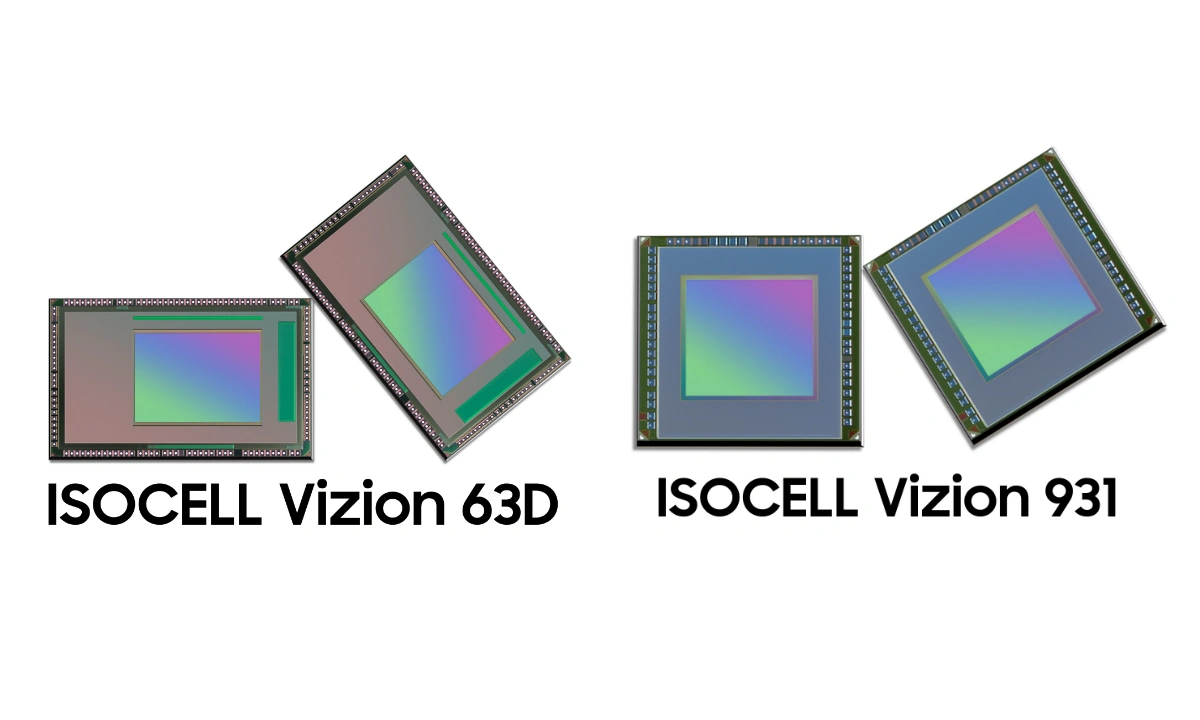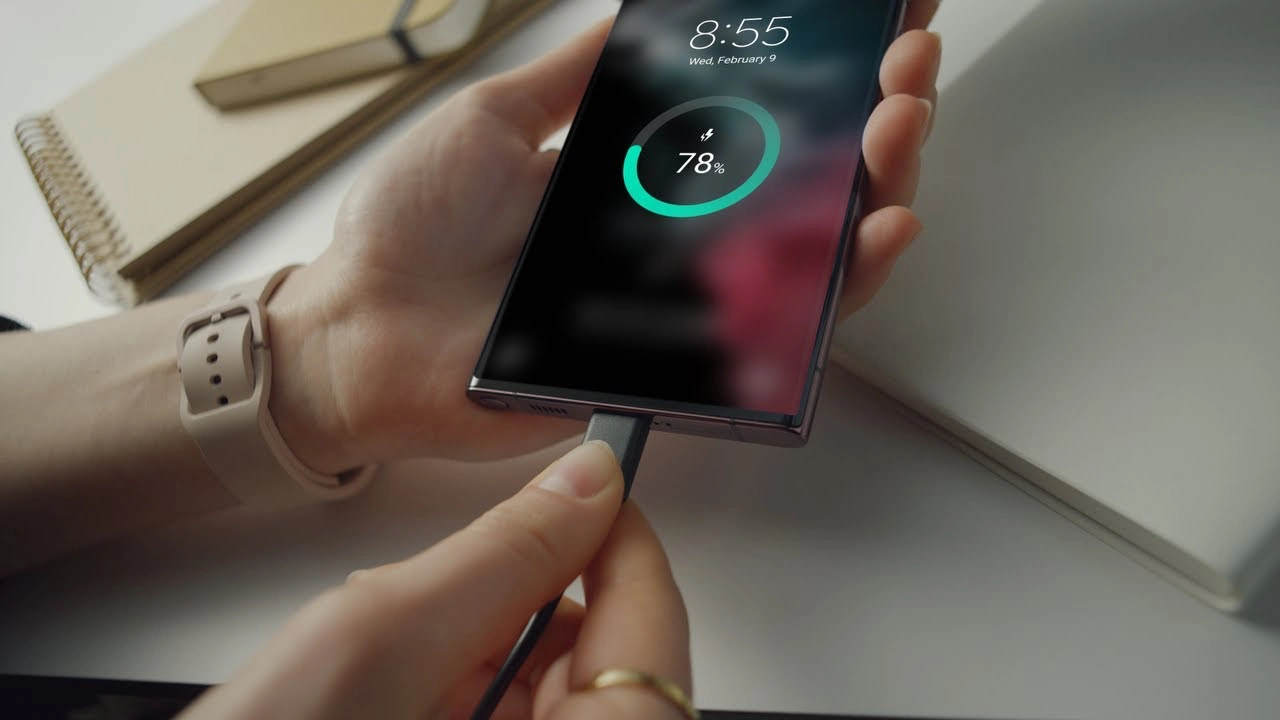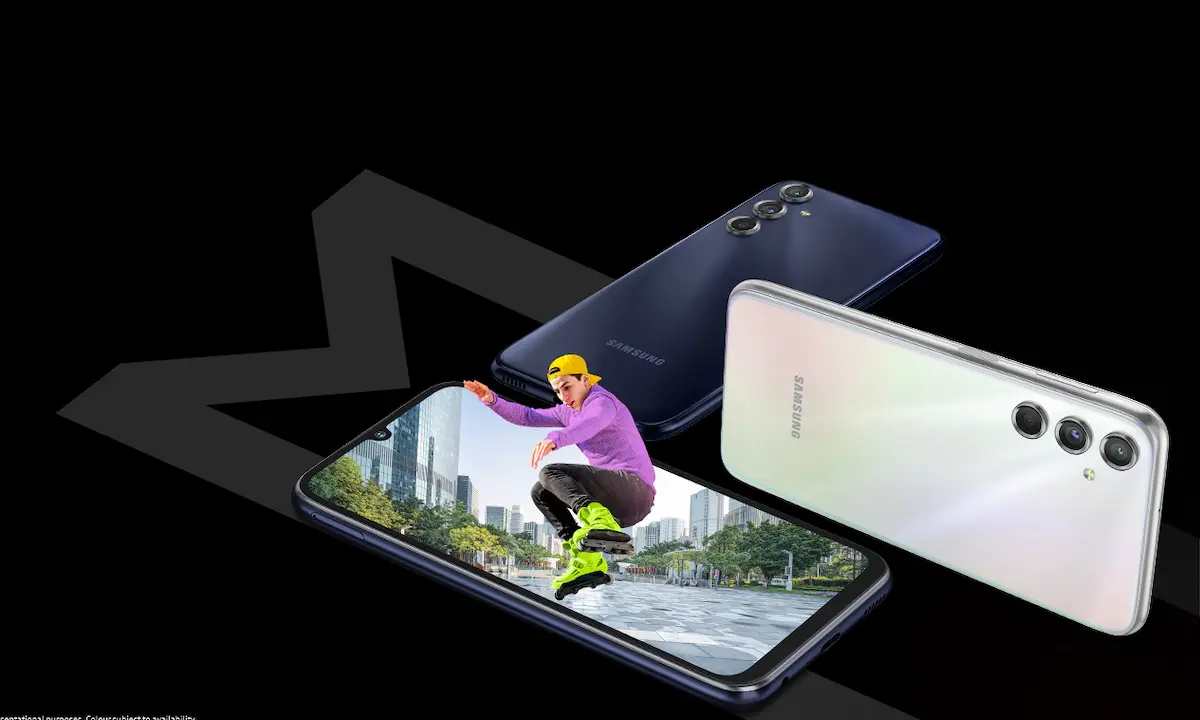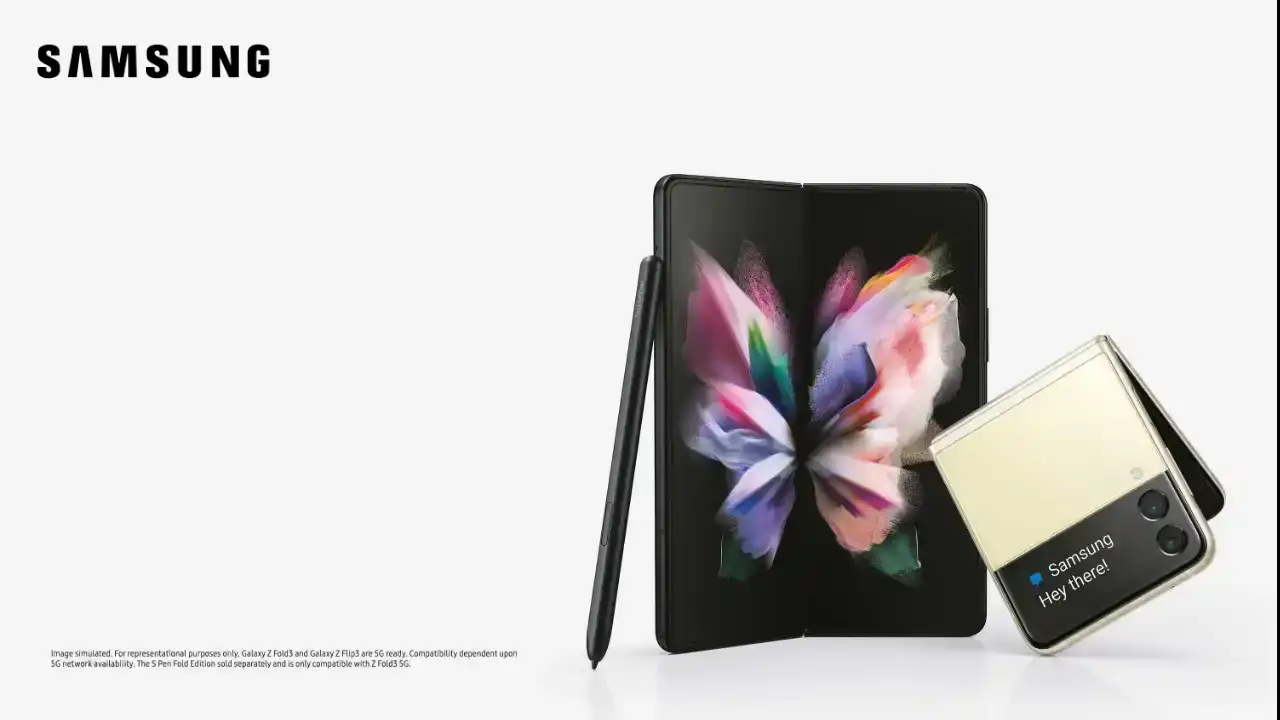News
Samsung Introduces ISOCELL Vizion 63D and 931: new camera sensors for AR/VR, phones

The ISOCELL Vizion 63D and the ISOCELL Vizion 931, two innovative sensors from Samsung Electronics that further advance machine vision for a range of applications, have set a new standard in image technology. These sensors are predicted to greatly augment the capabilities of robots, extended reality (XR) systems, and sophisticated security features. Currently, OEMs worldwide are receiving samples of the Samsung ISOCELL Vizion 63D and ISOCELL Vizion 931 sensors.
Samsung Sees Into the Future with New AR/VR and Phone Camera Sensors
ISOCELL Vizion 63D:

- The ISOCELL Vizion 63D from Samsung is a type of indirect ToF (iToF) sensor that senses its environment in three dimensions by measuring the phase shift between emitted and reflected light.
- The Vizion 63D offers remarkable precision and sharpness, making it perfect for use in high-resolution and accurate depth measurement applications.
- It is the first iToF sensor on the market with an integrated depth-sensing hardware image signal processor (ISP).
- It can accurately record 3D depth information without the assistance of a second chip because of its novel one-chip architecture, which allows for a 40% decrease in system power consumption over the previous ISOCELL Vizion 33D product.
- The sensor can process pictures at up to 60 frames per second at QVGA resolution (320 x 240).
- With the lowest 3.5㎛ pixel size in iToF sensors on the market, the ISOCELL Vizion 63D satisfies high Video Graphics Array (VGA) resolution (640×480) in a 1/6.4” optical format.
- At an infrared light wavelength of 940 nm, the Vizion 63D sensor achieves the greatest degree of quantum efficiency in the market, reaching 38% through backside scattering technology (BST).
- BST improves light absorption.
- The ISOCELL Vizion 63D greatly increases its measurable distance range from five meters to ten by supporting both high-resolution short-range and long-range illumination modes.
ISOCELL Vizion 931:

- Capturing fast motions without the “jelly effect” is the specialty of the ISOCELL Vizion 931 global shutter image sensor.
- For motion-tracking in XR gadgets, gaming systems, service and logistics robots, as well as drones, this enables the ISOCELL Vizion 931 to record crisp, undistorted pictures of moving objects.
- The ISOCELL Vizion 931 is ideal for iris identification, eye tracking, as well as face and gesture detection in applications where less space is available because of its one-to-one ratio VGA resolution (640 x 640).
- With an astounding 60% quantum efficiency at the 850 nm infrared light wavelength, the ISOCELL Vizion 931 also reaches the highest level in the industry.
- Combining the BST technique from the ISOCELL Vizion 63D with Front Deep Trench Isolation (FDTI), which adds an insulating layer between pixels to maximize light absorption,.
- The Vizion 931’s multi-drop capability allows for easy connection of four cameras to the application processor using just one cable.
- The sensor offers more design options to device manufacturers since it requires less wire.
Haechang Lee, Executive Vice President of the Next Generation Sensor Development Team at Samsung Electronics, said, “Engineered with state-of-the-art sensor technologies, Samsung’s ISOCELL Vizion 63D and ISOCELL Vizion 931 will be essential in facilitating machine vision for future high-tech applications like robotics and extended reality (XR). Leveraging our rich history in technological innovation, we are committed to driving the rapidly expanding image sensor market forward.”
News
Samsung Prioritizes Faster Charging in 2024 Smartphones

The first quarter of 2024 is already over; during this interval, Samsung has introduced several Galaxy smartphones of particular belonging, such as the flagship Galaxy S24 series, the Galaxy A55 and Galaxy A35, the mid-range ones, the Galaxy A15 and Galaxy F15, the budgetable ones, and many more. But the fact is, after being the latest smartphones, they have a lack of ‘charging speed.’
Undoubtedly, Samsung is leading the tech industry with its top-notch features, design, and larger batteries, as compared to other Android manufacturers, but despite all this, it has a massive lack of charging speed. Samsung usually attaches larger batteries to its Galaxy smartphones to enhance the users’ non-stop-using experience. But a larger battery isn’t worth it unless it has a good charging speed.
On the other hand, Chinese manufacturers are equipping their smartphones with charging speeds north of 100W, whereas 45W is the maximum speed you can get on Galaxy smartphones. However, even 45W charging is quite rare among Galaxy phones. Samsung has launched most of the Galaxy devices in the last couple of years, including the flagship with support for 25W.
Here we are making things easy for you if you are looking to buy a Galaxy smartphone that debuted in 2024 with the support of 45W charging speed by mentioning a list of devices:
- Galaxy S24 Ultra
- Galaxy S24+
- Galaxy F55
- Galaxy M55
- Galaxy C55
The list is quite short, even considering that the Galaxy F55, M55, and C55 are just rebranded variants of the same smartphone for different regions. Now Samsung is setting up to launch its next-generation foldable devices, the Galaxy Z Fold 6 and Galaxy Z Flip 6, in July, but it is yet to be confirmed whether these devices will get a boost in charging speeds from 25W or not.
News
New Galaxy Phone In Existence: Samsung Galaxy M35 5G Spots On Geekbench

The Korean brand – Samsung has recently announced its two mid-range Galaxy smartphones – Galaxy A55 5G and Galaxy A35 5G. A new benchmark listing has a spot for Samsung’s affordable smartphone, Galaxy35 5G.
Samsung is now gearing up for its next affordable Galaxy smartphone, the M35 5G, as the reports are unvunveilhey have found a new benchmark listing for Samsung the Galaxy M35 5G.
The smartphone has been spotted with the model number as an identification code – SM-M356B on the Geekbench 6.2.2 database. Not only this, but it also confirmed the presence of 6GB of RAM and Android 14 OS. The chipset also came to know which is the latest Exynos 1380.
The codename for the motherboard is also mentioned, which is ‘s5e8835.’ The reports say that it has scored 656 and 1967 points in performance scores on the benchmarking platform. Exynos 1380 is the latest chipset of the Korean brand, which is a 5 nm processor. It consists of 4 Cortex A78 cores, which clock at 2.4GHz, and 4 Cortex A55 cores, which clock at 2.0GHz. It is coupled with a Mali g68 MP5 GPU. It also has an AI Engine.
This also offers connectivity options, which include the latest Bluetooth version 5.3 and Wi-Fi 802.11 ax with three bands. It supports a camera resolution of at least 200MP for capturing images, and for video recording, there is support for up to 30fps 4K recording. The storage supported is UFS v3.1, and RAM will be of the LPDDR4x/5 type.
Samsung has recently debuted its two smartphones, Galaxy A55, and Galaxy A35; the Galaxy A35 5G smartphone is powered by Exynos 1380 chipset. From this perspective, Galaxy M35 5G could be a variant of Galaxy A35.
At the moment, no specs and features of the device have been revealed or leaked. Still, since Galaxy M series smartphones usually have a bit higher battery power of at least 6000mAh, the forthcoming Galaxy M35 5G smartphone also arrives with the same battery power.
Firmware
Verizon rolls out the March 2024 security patch update for the Galaxy Z Fold 3 and Galaxy Z Flip 3 devices

Verizon has rolled out the March 2024 security patch update for the Galaxy Z Fold 3 and Galaxy Z Flip 3 devices. Earlier, these devices had received the same update outside the US, but now they are gradually expanding to the US.
The Galaxy Z Fold 3 and Galaxy Z Flip 3 are spotted getting new updates with the firmware version numbers F926USQS5HXBD and F711USQS6HXBD, respectively. It is worth noticing the update is currently available for the devices locked to Verizon, but it will soon be available on more carriers.
For your information, the latest update for Galaxy Z Fold 3 and Galaxy Z Flip 3 doesn’t bring any significant changes, but as it is the latest security patch, it will provide some internal fixes to maintain the security of the devices.
If you are getting some other issues from the last update, you should also update the device to the latest update, as it may also address some issues. Along with the update, other improvements may also be made to enhance the overall performance of the devices.
Suppose you use the Galaxy Z Fold 3 or Flip 3 device in the US. In that case, you can update the device to the latest version by simply going to the system settings and then to the software update. If you haven’t received the update, you should wait for some time, as it may arrive in the next few days.












